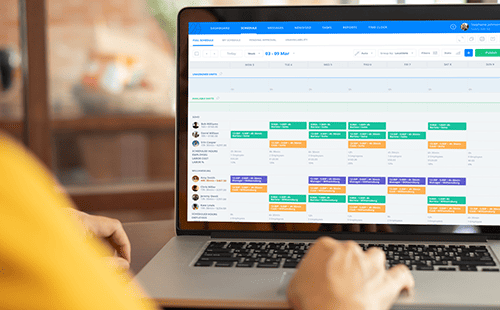How To Start A Coffee Shop | A Detailed Guide
What do you get when you cross a tireless entrepreneurial spirit with a love for...

Want to open a coffee shop of your very own? Give it the best chance for success by writing a coffee shop business plan.
But, what exactly is a business plan, why do you need one, and what’s the best way to make such a plan?
In this article, we discuss the answers to those questions and how the right technology can help you run things smoothly once your coffee shop business plan becomes a reality.

A coffee shop business plan is a written document that describes:
In essence, a coffee shop business plan is a roadmap that provides structure and direction to an as-yet unformed operation.

Many first-time, prospective entrepreneurs wonder if they really need a business plan to get started. The answer is yes.
Without a business plan, it will be very difficult — some would say impossible — to get a loan from a bank or funding from an investor.
But, even if funding isn’t a major concern right now, a business plan provides clear direction on how you intend to get where you’re going and how to make your new endeavor a success.
Sure, we’ve all taken a road trip (or gone traveling) without a map or a plan, and sometimes that can be fun.
Starting a new business, though, demands much more of an investment than just picking a direction and heading out. Starting a new business can occupy all of your time, money, and energy for years to come, so you don’t want to commit yourself without a plan.
That’s what the coffee shop business plan is: a map to help you keep moving in the right direction when things are going smoothly and to show you how to get back on track when they aren’t.

As you get started writing your very own business plan, keep in mind that the document you produce doesn’t have to be the final draft right away, nor does it have to include every single detail about your business.
Yes, some business plans are hundreds of pages long. Yours may reach that level in the end, but don’t allow that fact to overwhelm you now or stop you from getting started.
Get the information on the page to the best of your ability, and then go back and edit as needed to make it the best it can be. A business plan is a living document that may change as your business grows. But it and your business can’t go anywhere until you write your first draft.
Here’s how to get started.
As we mentioned, some business plans can be chock-full of details and facts about the business itself, and many first-time owners wonder where all that information comes from.
The answer is simple: The details in your business plan are basically answers to questions you and anyone else may have about how to go about transforming your idea into reality.
Before you write one word, sit down and consider all of the questions you have about what you’re getting into.
For example, you may ask yourself:
Go through the list and answer as many of those questions as you can in whatever level of detail you can muster.
The nice thing about starting with this step (instead of jumping right into word one of the main sections of the plan) is that you can use the answers you generate as the basis for what comes next.
While the other sections in your coffee shop business plan can go in any order you choose, the first section should always be the Executive Summary.
This section gives a brief overview of the main elements of the coffee shop you plan on running, including:
Keep in mind that this information is here at the start to give readers a quick introduction to the plan. If they want more detail, they can read on.
It’s also important to remember that you’ll likely repeat much of the information in the executive summary later on in your business plan.
That’s OK. You won’t be penalized if a reader finds the exact same details elsewhere in your document.

Next, write a description of your company. More specifically, write about the who, what, why, where, and how of your coffee shop.
View the Business Description section as the physical details about the business you intend to run, including:
It can also be helpful to include a brief mention of your coffee shop’s short- and long-term goals as well as your plan for achieving those goals.
The next section to include in your coffee shop business plan is Market Analysis.
Most market analyses describe three distinct views of the business:
As with the previous two sections, the Market Analysis section can be a relatively brief discussion of these three concepts.
As your coffee shop business grows, you can add sections that address those concepts in more detail later on.
Both you and your investors are going to want to know how much money it’s going to take to get the coffee shop set up, running, and turning a profit. That’s where the Financials section comes in.
While brevity is important (if not mandatory) in the first few sections on this list, when you explain your coffee shop’s financials, you want to be as detailed as possible.
This is especially true if you hope to secure bank funding or get involved with investors.
To provide the level of detail you need to make the Financials section as complete as possible, consider hiring an accountant to help you prepare this section so that it will be as accurate as possible.

As you research and write your coffee shop business plan, include information about the technology you’ll use to help run your business.
More specifically, find a software suite that makes it easier to manage and optimize your team.
The Sling app, for example, includes a long list of tools to help make your workforce management as efficient and productive as possible, including:

Try Sling for free today to get a better idea of the many ways it can help you once your coffee shop business plan becomes a reality.
Then, for further business management resources, help scheduling your employees, and tips for getting the most out of your team, visit GetSling.com today.
See Here For Last Updated Dates: Link
This content is for informational purposes and is not intended as legal, tax, HR, or any other professional advice. Please contact an attorney or other professional for specific advice.
Schedule faster, communicate better, get things done.